Tracking research is extremely valuable as it allows organizations to see trends over time, understand historical changes, and sometimes, use these learnings to anticipate future trends (such as seasonal shifts that occur during certain times of the year). It helps companies keep a pulse on audiences of interest, enables them to identify their strengths and weaknesses, and allows them to plan for the future.
Is your tracker maintaining its value to your organization? The life of a tracking study can span over many years and a lot can change within an organization. It’s imperative that when managing a tracking study, researchers balance continuity with taking the necessary steps to make sure the tracker can keep up with the changing times in order to continue to provide insights that are useful and actionable to the stakeholders. With the longevity of most trackers and the countless number of reports/data requests, it’s important to document project changes, nuances, and have a customized reporting checklist to ensure everyone involved understands the history of the research.
Is your vendor making the most of your tracker? KS&R has developed best practices for tracking research:
Always Look for Value-adds
Despite the value of tracking research, some stakeholders may begin to grow bored seeing the same data, with very flat trends quarter-over-quarter and year-over-year. This boredom can lead to questioning of the value of conducting the research altogether. As a research partner, KS&R helps keep stakeholders engaged, making sure they are getting the most out of the research. A few ways to guide this effort include:
- Tailored reports that concisely address key business questions
- Infographic summaries for a streamlined, visual look that engages a wider audience
- Proactive analysis to dive deeper
A Solid Questionnaire Made For Tracking
Perhaps the most important piece is the tracking questionnaire itself. The survey needs to be designed in such a way that it can produce sound results, quarter over quarter, year over year, while also staying relevant and adjusting to changes over time.
- Ensure that your screening, demographic/firmographic, and core questions do not change
- Ask core questions early in the survey to avoid question order bias
- Create a ‘flex’ section towards the end of the survey for ad hoc questions that can address changing business objectives
- Keep the survey up-to-date to reflect changing market dynamics
Methodology Documents
A tracking study can outlast those who initiated the research, so it’s important to have a comprehensive methodology document that covers the details of the project. Examples of topics and details to consider including in a methodology document are:
- Tracking study background
- Target audience & incidence
- Data collection practices
- Survey modifications
- Data cleaning plan
- Weighting plan
- Analysis & reporting plan
- Project timeline
- Fieldwork details
Reporting Checklists
Oftentimes there are multiple people working on a study at one time, and over the years, the team for a particular project could change significantly. With different hands in the mix, it is easy for the flow of a report to become choppy and inconsistent. In order to ensure quality and consistency throughout the life of your tracking study, having detailed reporting checklists is recommended. These documents lay out rules and guidelines for pulling together deliverables. Details included in these checklists are:
- Base size rules & notations
- Significance testing guidelines
- Writing standards
- Other aesthetic rules and preferences for reporting
- Detailed quality control checks to ensure data integrity and quality
Although there may be some core elements to all reporting checklists, it’s important to have a customized list for each tracking project to ensure stakeholder preferences and specific analysis are taken into account.
Meet, Plan, & Develop
Nothing beats good communication! A two-way sharing of information will help you and your stakeholders better understand what the data is saying and help your vendor understand changes they might be seeing to frame results in a fuller context. This knowledge will enable both sides of the team to jointly create better insights.
- Hold regular project update meetings
- Annual workshops/planning sessions
With solid documentation, value-adds, and proper planning, your tracking research can maintain its usefulness and continue to run successfully well after you retire.
KS&R has many years of tracking study experience and has developed a list of key elements to maintaining tracker value and integrity. Watch our webinar detailing our best practices for managing tracking studies. Click here >

